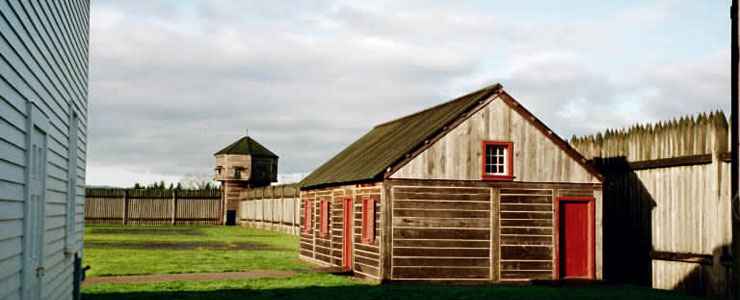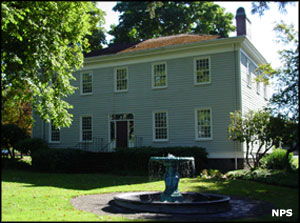Fort Vancouver National Historic Site

Fort Vancouver National Historic Site

The McLoughlin House
The Fort Vancouver National Historic Site consists of two units: one in Vancouver, Washington on the site of the original Fort Vancouver, the other in Oregon City, Oregon where the chief factor (trading master) of the Fort Vancouver trading post settled after he left the employ of the Hudson's Bay Company.
The original Fort Vancouver was an important Hudson's Bay Company fur trading outpost established in 1824. Over time, Fort Vancouver exerted an influence from Alaska to Mexico, from the Rocky Mountains to Hawaii. Then when the number of American citizens moving into the area began to impact operations, the primary operations were moved to Fort Camuson (later Fort Victoria) on Vancouver Island in 1843. The treaty that settled the boundary dispute was ratified in 1846 but that treaty allowed Hudson's Bay Company to continue operating the trading post as long as they wanted. Hudson's Bay Company finally packed up and left the area completely in 1860.
The US Army built a barracks next to the trading post in 1849 and took over the whole facility after Hudson's Bay left. Then a fire in 1866 destroyed the trading post. The Army still maintains some form of presence in the area.
The original site of Fort Vancouver was separated from the Army barracks in 1948 and became a National Monument. Congress expanded the area of the site, ordered the construction of a replica of the fort to be built and made Fort Vancouver a National Historic Site in 1966. Everything seen today at Fort Vancouver National Historic Site is a reconstruction of the original, painstakingly placed in the original locations and built to match drawings from the day.
The McLoughlin House unit of Fort Vancouver National Historic Park contains the home of John McLoughlin and the home of his associate and fellow explorer, Dr. Forbes Barclay. The houses are located next to each other on a bluff overlooking the Willamette River in Oregon City, Oregon.
McLoughlin had left the employ of Hudson's Bay Company in 1846 and bought a piece of land from them in Oregon City to settle on. He built a house more typical of an East Coast construction (a two-story colonial mansion) and he lived there until he died in 1857. His wife lived there until she died in 1860 and their heirs sold the property in 1867. Within a few years the home had become the Phoenix Hotel, a well-known brothel. Eventually, the property was bought by a paper mill that wanted the land to expand their factory. Local preservationists were able to save the mansion and got it moved to where it is now in 1910. It was finally restored during the Civil Works Administration era and opened as a museum.
The Barclay house was built in 1849 and Dr. Barclay lived there until he died in 1874. The family held onto the property until they sold it in 1930. After it was purchased, it was also moved to sit on the bluff next to the McLoughlin home where it housed the museum offices and a gift shop.
The McLoughlin House was designated a National Historic Site in 1941, then both homes were added to the National Park System in 2003 as a unit of the Fort Vancouver National Historic Site.
Upper left photo courtesy of the National Park Service